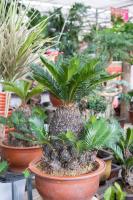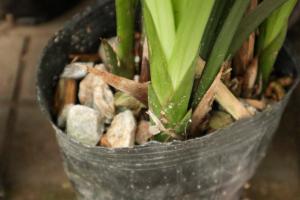Do You Need Holes in a Plant Pot?
Plant pots come in various designs, shapes, and sizes, and are essential for keeping plants healthy and thriving. However, one aspect that often goes unnoticed is the importance of having holes in your plant pot. In this article, we will delve into the benefits of having holes in your plant pot and how they impact the overall health of your plant.
The Importance of Drainage Holes
Drainage holes are crucial if you want to keep your plant healthy and prevent it from drowning in water. Without proper drainage, your plant's roots can quickly become waterlogged and suffer from root rot, which can ultimately kill your plant. Drainage holes allow excess water to drain out of the pot, ensuring that your plant's roots are not sitting in water for too long.
The Size of the Holes Matters
While the presence of drainage holes is essential, the size of the holes is also critical. If the holes are too large, the soil will fall through, and the roots will not have enough support. On the other hand, if the holes are too small, water will not drain out of the pot quickly enough, and your plant's roots will become waterlogged. The optimal size for drainage holes is typically around 1/4 to 1/2 inch in diameter.
How Many Holes Should Your Plant Pot Have?
The number of drainage holes you need in your plant pot depends on its size. A small plant pot typically needs only one or two holes, while larger pots require more drainage holes. As a general rule of thumb, your pot should have one hole for every six inches of surface area. It's also essential to ensure that the holes are evenly spaced around the bottom of the pot.
What if Your Plant Pot Doesn't Have Drainage Holes?
If you have a plant pot that doesn't have drainage holes, don't worry; there are still steps you can take to ensure your plant's health. First, ensure that you use a well-draining soil mix. You can also add a layer of gravel or stones at the bottom of the pot to help with drainage. Finally, be sure to water your plant sparingly to avoid waterlogging the roots.
In Conclusion
Having proper drainage is essential to the overall health of your plant. Drainage holes help prevent root rot and ensure that your plant's roots are not sitting in water for too long. The size and number of holes also play a crucial role in ensuring adequate drainage. If you have a plant pot without drainage holes, you can create a suitable environment for your plant by using well-draining soil and adding a layer of stones or gravel at the bottom of the pot.
So, the next time you're shopping for a plant pot, be sure to choose one with appropriate drainage holes. It could make all the difference in the health and well-being of your plants!

 how many times do yo...
how many times do yo... how many planted tre...
how many planted tre... how many pine trees ...
how many pine trees ... how many pecan trees...
how many pecan trees... how many plants comp...
how many plants comp... how many plants can ...
how many plants can ... how many plants and ...
how many plants and ... how many pepper plan...
how many pepper plan...
































